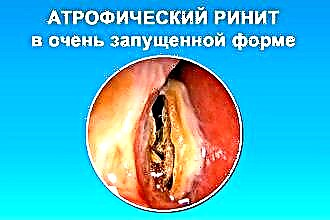Lacunar angina is a purulent inflammation that affects the lacunae (depressions) on the surface of the tonsils. The symptoms of the disease are very similar to the clinical manifestations of follicular tonsillitis. In fact, both types of ENT diseases belong to the same type of pathological processes and are different stages in the development of acute tonsillitis.
The causative agents of infection are most often pathogenic bacteria, therefore, antibiotics of the penicillin series are used to stop purulent processes. Timely passage of therapy prevents the further spread of foci of inflammation. If all the conditions of general and antibiotic therapy are observed, recovery occurs 9-10 days after infection.
Pathogenesis
 The palatine tonsils are paired organs formed from lymphoid tissue. They are located in the mucous membrane of the oropharynx directly between the root of the tongue and the soft palate. The tonsils take part in the formation of local immunity, which is due to their ability to synthesize immunocompetent leukocytes.
The palatine tonsils are paired organs formed from lymphoid tissue. They are located in the mucous membrane of the oropharynx directly between the root of the tongue and the soft palate. The tonsils take part in the formation of local immunity, which is due to their ability to synthesize immunocompetent leukocytes.
The entire surface of the tonsils is permeated with cavernous depressions (lacunae), the channels of which lead to the body of lymphoid formations. Protective cells in the lacunae capture pathogenic microbes and viruses, which prevents infection from penetrating deep into the oropharynx. A decrease in the body's resistance affects the performance of lymphocytes, which becomes the cause of the uncontrolled development of opportunistic microorganisms.
Etiology
Treatment of lacunar sore throat in adults is often accompanied by the intake of antimicrobial medications. However, the choice of a specific group of drugs largely depends on the type of infectious agent. Lacunar tonsillitis most often occurs as a result of the development of microorganisms such as:
- streptococci;
- pneumococci;
- fungus Candida;
- staphylococci;
- adenoviruses;
- rhinoviruses.
Infection occurs mainly by airborne droplets, alimentary through food, as well as through household contact through dishes, hygiene products, etc.
The development of infection and the appearance of symptoms is possible only with a sharp decrease in the body's resistance. Weakening of local immunity is becoming one of the key reasons for the development of opportunistic microorganisms. Lacunar sore throat can be triggered by:
- hypovitaminosis;
- chronic fatigue;
- hypothermia;
- chronic rhinitis;
- unfavorable ecology;
- pulpitis and caries;
- emotional stress.
Before treating pathology at home, you need to be examined by a specialist. The diagnosis is made solely on the basis of laboratory analysis data and a separate set of clinical and epidemiological examinations.
Clinical picture
Due to the fact that the pathogenesis of ENT disease develops rapidly, the symptoms of lacunar tonsillitis occur within a few hours after infection. In full, the clinical picture manifests itself in a day, when the intoxication of the body occurs:
 headache;
headache;- lack of appetite;
- sore throat;
- myalgia;
- arthralgia;
- hyperemia of the cheeks;
- tachycardia;
- fast fatiguability;
- sleep problems;
- pain in the throat when swallowing;
- regional enlargement of the lymph nodes;
- febrile or pyretic fever.
It should be noted that the symptoms of secondary tonsillitis, developing against the background of diphtheria, tuberculosis or scarlet fever, are somewhat different. Patients complain of dry mouth, flushing of the cheeks and severe pallor of the skin in the area of the nasolabial triangle.
The key symptoms of the development of lacunar angina are the presence of pus in the lacunae (palatine tonsils) and severe intoxication of the body.
Severe form of the disease
A severe form of infectious inflammation is characterized by a sudden onset and rapid increase in the above-described clinical manifestations. Signs of lacunar sore throat are more pronounced than in the case of the development of typical tonsillitis. If the symptoms of pathology are not stopped in time, serious complications may occur, accompanied by damage not only to the ENT organs, but also to the kidneys.
A distinctive feature of the severe form of lacunar tonsillitis is the coating of the palatine tonsils with a white bloom already 2 days after infection. In this case, the tissues of the soft palate and mucous membrane of the oropharynx undergo serious changes: they increase in size and become covered with mucus. This interferes with the normal intake of solid foods.
already 2 days after infection. In this case, the tissues of the soft palate and mucous membrane of the oropharynx undergo serious changes: they increase in size and become covered with mucus. This interferes with the normal intake of solid foods.
What are the symptoms of severe angina development?
- convulsions;
- tachycardia;
- pain in the eye sockets;
- headache;
- visual and audiological hallucinations;
- poor circulation in the limbs.
To prevent injury to the mucous membrane of the pharynx with food particles, during the entire course of treatment, you should refuse to eat solid food.
When to see a doctor?
If typical signs of lacunar angina are found, the patient's throat should be examined for inflammation and the presence of abscesses. Due to the strong intoxication of the body, the symptoms of the disease almost do not differ from the clinical manifestations of follicular tonsillitis. However, it is angina that is fraught with serious complications, among the most formidable of which are meningitis, myocarditis and labyrinthitis.
Typical local symptoms of angina:
- swelling of the tonsils;
- hyperemia of the pharyngeal mucosa;
- inflammation of the palatine arches;
- white bloom on the walls of the oropharynx;
- enlargement of the submandibular lymph nodes;
- the formation of cloudy mucus on the back of the pharynx.
If you find characteristic manifestations of pathology, you should seek help from an otolaryngologist. If the inflammation is not treated, serious complications can occur leading to the development of sinusitis, bronchitis, myocarditis, etc.
Diagnostics
Non-started forms of ENT disease are treated at home using antimicrobial, antiphlogistic and anti-edematous agents. But before that, you need to make sure that the diagnosis is accurate. When visiting a specialist, a number of instrumental and laboratory studies are carried out, during which the type of infectious agent, the prevalence of inflammation foci, the depth of the lesion of the ciliated epithelium, etc. are determined.
The standard set of clinical trials includes:
- palpation of peripheral lymph nodes;
- pharyngoscopic examination of the pharynx;
- biochemical and general analysis of blood and urine;
- sowing a smear from lacunae for the presence of pathogens (bacterial sowing);
- immunological analysis to determine viral pathogens.
On examination, lacunar tonsillitis is differentiated from pharyngitis, tonsillopharyngitis, ARVI, influenza and infectious mononucleosis.
As a rule, with the development of lacunar tonsillitis, the indicators of urine and blood change in this way: the number of leukocytes increases many times, ESR is significantly accelerated and lymphocytosis is observed.
Drug therapy
What should be the treatment for lacunar sore throat? An antimicrobial medication is an integral part of therapy. The main task of medications is eradication, i.e. uncompromising destruction of disease-causing agents. To ease the manifestations of the disease and speed up the process  recovery, the conservative treatment regimen includes anti-inflammatory, antipyretic, decongestant and immunostimulating drugs.
recovery, the conservative treatment regimen includes anti-inflammatory, antipyretic, decongestant and immunostimulating drugs.
Treatment of ENT disease at home is carried out by taking the following medications:
- antipyretics (Panadol, Efferalgan, Aspirin) - normalize body temperature in the event of febrile and pyretic fever, which prevents coagulation of proteins in the blood;
- immunomodulators ("Ribomunil", "Virorib", "Flavoside") - activate the immune system, which increases tissue reactivity and the destruction of pathogens in the foci of inflammation;
- NSAIDs (Nurofen, Lornoxicam, Etodolac) - inhibit the synthesis of inflammatory mediators, which contributes to the regression of catarrhal processes in the oropharyngeal mucosa;
- antihistamines (Diazolin, Erius, Suprastin) - relieve swelling of the mucous membranes in the airways, which helps to alleviate the clinical manifestations of the disease;
- multivitamins ("Centrum", "Biovital", "Multi-Tabs") - normalize biochemical processes in the body, as a result of which cellular metabolism is accelerated and local immunity is increased;
- antiviral drugs ("Arbidol", "Cycloferon", "Aflubin") - interfere with the synthesis of viral RNA, as a result of which the number of pathogens in the foci of inflammation decreases.
Medical treatment at home is completed only 3-4 days after the complete regression of inflammation. Reinsurance is associated with the risk of disease recurrence and complications.
Antibiotic overview
Antibiotics are drugs with antimicrobial action, the active components of which inhibit the development of aerobic and anaerobic protozoa and unicellular organisms. Most drugs contain toxic components, so they are used only in extreme cases to eliminate pathogens, the development of which is fraught with serious consequences. How can lacunar tonsillitis be treated?
To stop purulent processes in the oropharynx and tonsils, broad-spectrum antibiotics are used. They are prescribed exclusively by a doctor after a preliminary examination of the patient. The most effective medications include:
- "Klacid" is a semisynthetic preparation of the macrolide group, which suppresses the synthesis of protein components of bacteria, which prevents their development;
- "Hemomycin" is an azalide antibiotic, the components of which form stable complexes with the ribosomes of pathogenic bacteria, which prevents DNA replication and the formation of daughter cells;
- "Panklav" is a drug of the penicillin group, the components of which are active against many gram-positive and gram-negative microbes;

- "Azitrox" is a semi-synthetic bacteriolytic agent that destroys the cellular structures of pathogens.
To prevent the development of dysbiosis, antibiotics should be taken in combination with probiotics that increase the body's resistance.
Local treatment
It is possible to stop purulent processes in the airways with the help of topical drugs. The components of the drugs quickly penetrate the affected tissues, which contributes to the destruction of pathogens and the acceleration of regeneration processes. At home, to eliminate pathological processes in the pharynx, the following can be used:
- solutions for inhalation (Ingalipt, Bioparox) - quickly penetrate the pharyngeal mucosa, preventing the development of microbial agents;
- sprays for irrigation ("Orasept", "Elyudril") - disinfect the mucous membrane and soften the throat, which helps to eliminate pain and hyperemia;
- resorption tablets ("Lizobakt", "Strepsils") - destroy pathogenic bacteria in the foci of inflammation, thereby accelerating the resolution of purulent processes in the mucous membrane.
Symptomatic drugs are used to eliminate discomfort caused by intoxication of the body and inflammation in the ciliated epithelium. They should be taken together with pathogenetic therapy drugs aimed at eliminating infectious agents.

 headache;
headache;


